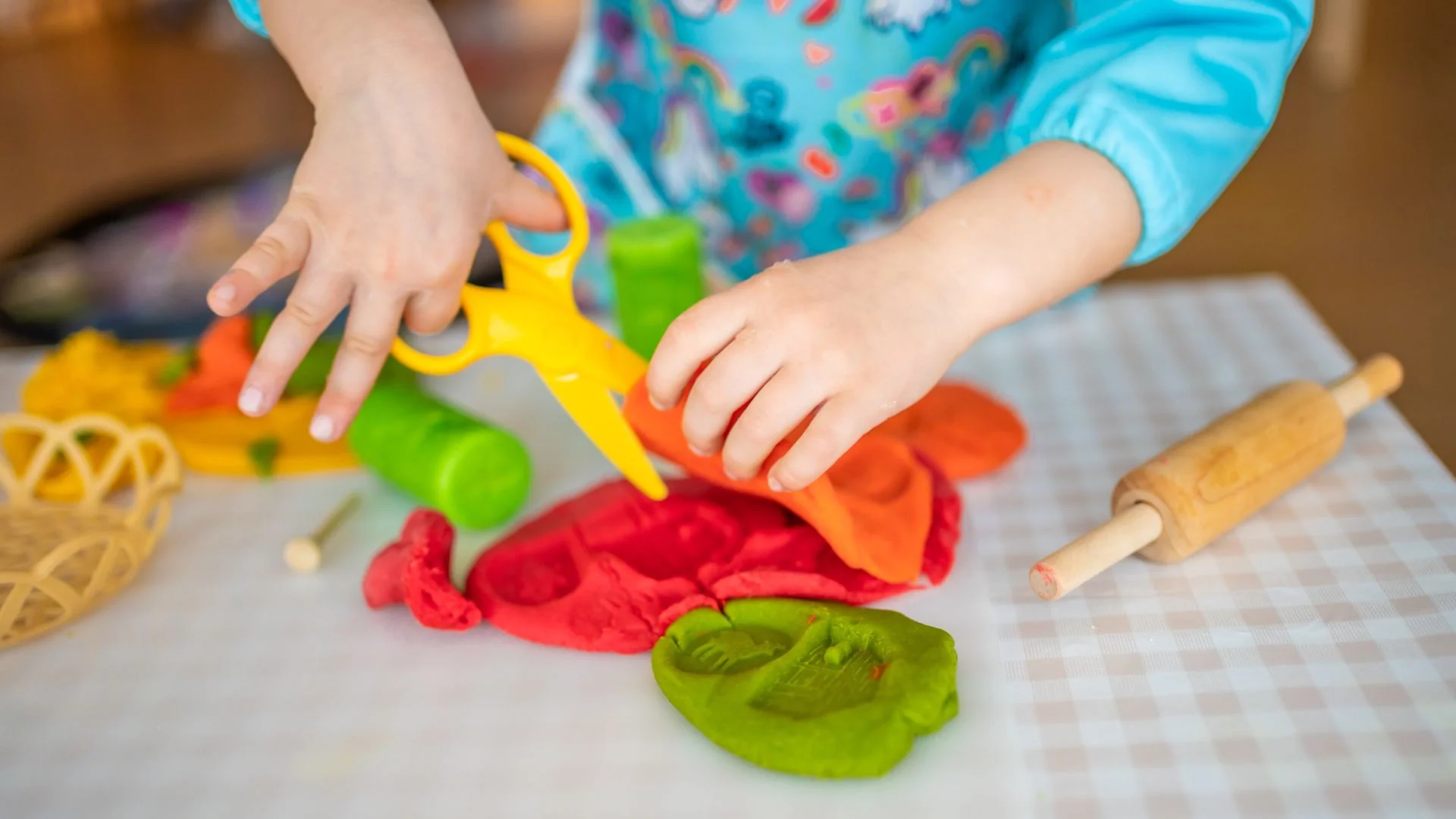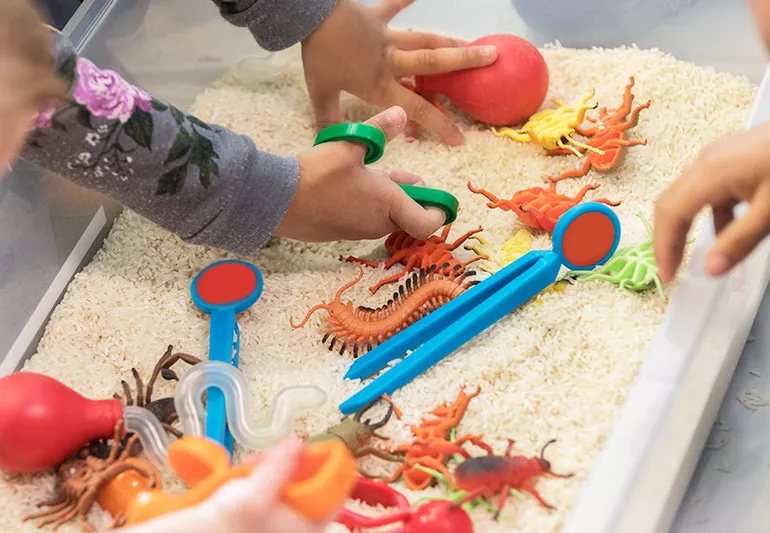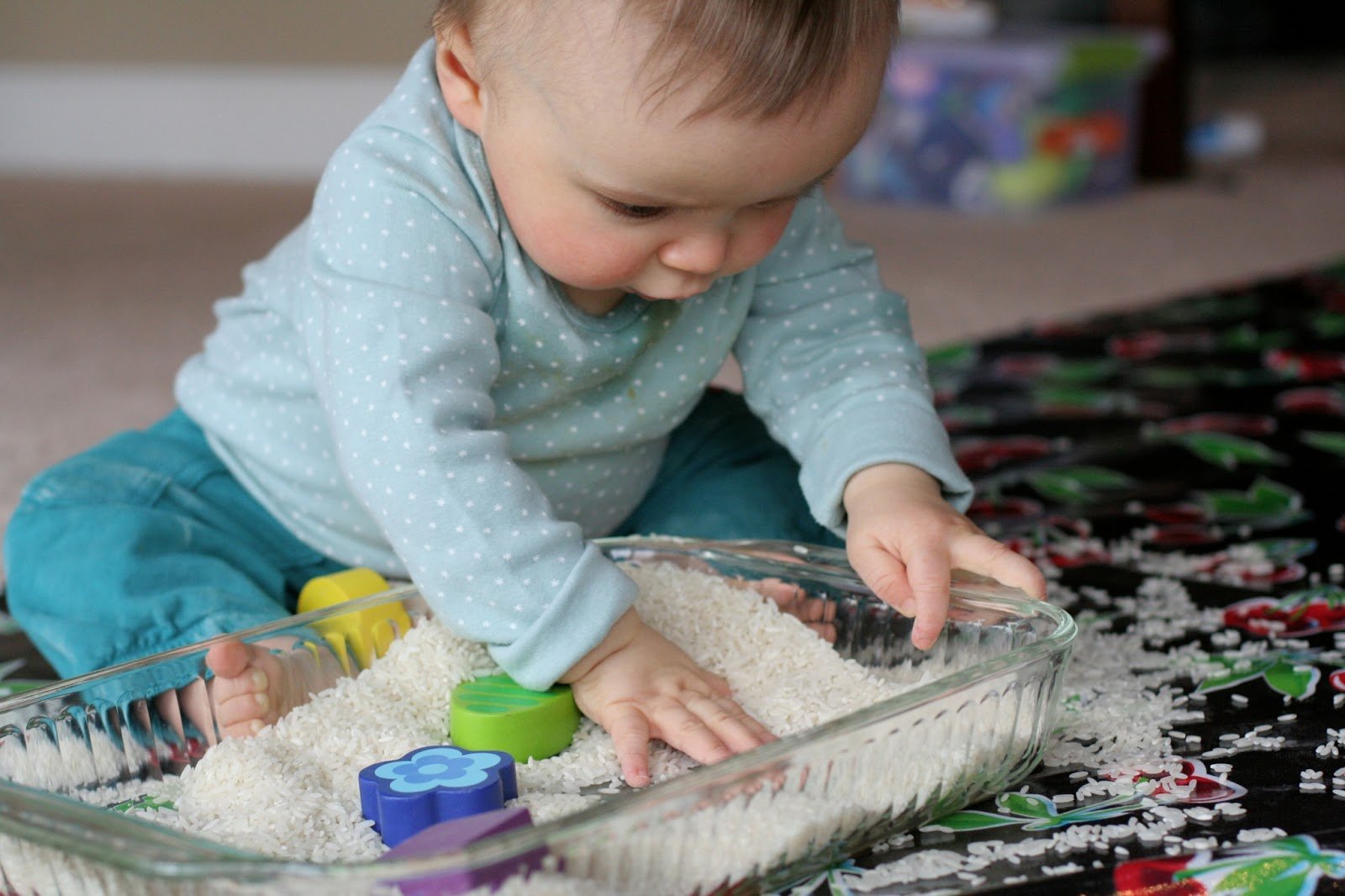Sensory play is more than just fun and games for young children. It plays a vital role in brain development by stimulating key areas of the brain that contribute to cognitive, emotional, and physical growth. As children engage with their senses—sight, touch, sound, taste, and smell—they form connections that promote learning, creativity, and problem-solving. This type of play lays the foundation for skills they will need throughout their lives.
Stimulates Neural Connections
One of the most significant ways sensory play boosts brain development is by stimulating neural connections. The brain forms new connections as children experience different sensory stimuli. These connections are essential for learning new information, improving memory, and developing cognitive skills.
For example, when a child touches different textures like sand or playdough, the brain makes connections between the sensory experience and the words used to describe it, such as “soft” or “rough.” Over time, these connections build the foundation for more complex learning and thinking processes.
Enhances Cognitive Skills
Engaging in sensory activities helps children develop essential cognitive skills. Sensory play challenges children to make sense of the world around them by connecting what they feel, see, hear, or taste to their developing understanding.
For instance, when toddlers explore a sensory bin filled with rice and small objects, they engage in activities like sorting, counting, or comparing. These actions support skills like problem-solving, critical thinking, and categorization. As children encounter new sensory experiences, their ability to think abstractly and logically also improves.

Develops Motor Skills
Sensory play also plays a significant role in physical brain development by enhancing both fine and gross motor skills. Fine motor skills, which involve small muscle movements, develop when children grasp, pinch, or manipulate objects like beads, blocks, or clay. These activities strengthen the neural pathways responsible for hand-eye coordination and dexterity.
Gross motor skills, which involve larger movements such as walking, running, or jumping, are also stimulated through sensory activities like jumping in puddles or dancing to music. Both sets of motor skills are crucial for brain development as they help children learn about their physical environment and how to navigate it.
Boosts Emotional Development
Sensory play is key to emotional development because it helps children process and regulate their emotions. Engaging in hands-on activities gives children an outlet to express their feelings, whether through the soothing action of squishing playdough or the excitement of splashing in water.
This type of play provides a safe space for children to explore different emotional states and learn how to cope with new experiences. Sensory play can also help children manage stress and anxiety, as activities like water play or feeling soft textures can have a calming effect.
Furthermore, sensory play helps children build self-regulation skills by giving them opportunities to control their actions. For example, when playing with a sensory bin, they learn how to stop, start, or direct their behavior, which in turn strengthens their executive function skills.
Fosters Language Development
Through sensory play, children are exposed to new vocabulary and ways of expressing themselves. As they engage with sensory materials, caregivers and teachers often describe the textures, colors, and shapes they are experiencing. This interaction not only enhances vocabulary but also strengthens listening and comprehension skills.
For example, when a child explores a bag of rice, they may hear words like “grainy,” “soft,” or “rough,” which help build their understanding of language and concepts. Sensory play activities that involve storytelling, like pretending with toys or describing what’s happening in a sensory bin, also encourage the development of narrative skills and communication.
Encourages Creativity and Imagination
Sensory play is a great way to boost creativity and imagination. As children explore different materials, they are encouraged to experiment and think outside the box. This type of play lets children combine objects, textures, and colors in new and innovative ways.
For instance, when playing with a sensory bin filled with various toys and objects, children might create a story or a pretend world where these items interact. This fosters imaginative thinking, which is important for problem-solving, cognitive flexibility, and innovation.
In addition, sensory play helps children develop their ability to visualize and plan. For example, when working with building blocks, they not only experience the tactile sensations but also begin to understand concepts like balance, stability, and structure.
Strengthens Social and Communication Skills
Sensory play also enhances social development by promoting communication and cooperation. When children engage in group sensory activities, they learn how to share materials, take turns, and work together. These social interactions help them practice skills like empathy, negotiation, and conflict resolution.
Moreover, sensory play gives children the opportunity to develop their ability to express their needs and desires. For instance, when playing with a partner, one child may express their need for help or explain what they are doing with a particular object, strengthening their communication abilities.
Conclusion
Sensory play is much more than an enjoyable pastime for young children—it’s a powerful tool for brain development. By stimulating neural connections, boosting cognitive and motor skills, fostering emotional regulation, and encouraging creativity, sensory play sets the stage for lifelong learning.
From simple activities like water play to sensory bins and finger painting, each experience contributes to the development of essential skills that children need as they grow. Therefore, engaging children in sensory play is a crucial part of their cognitive, emotional, and physical development.









